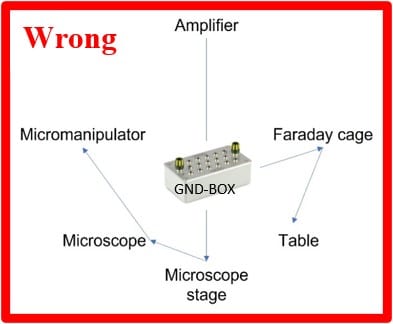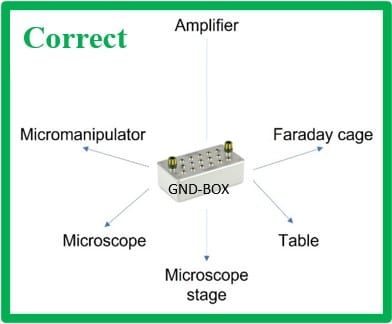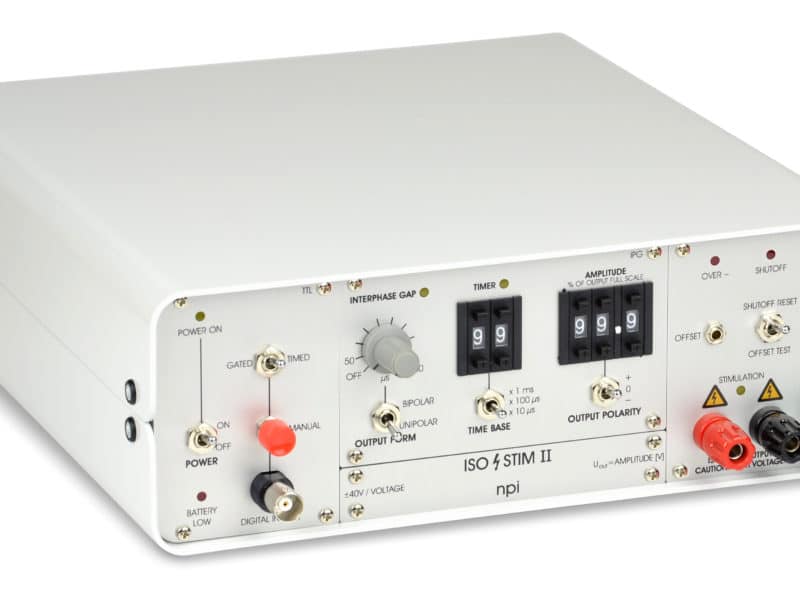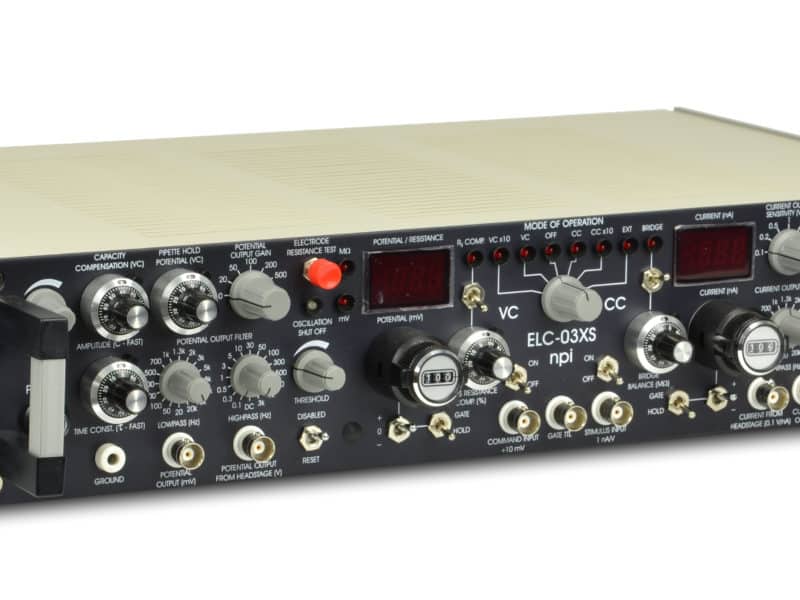
Grounding Guide
Content
Background
Common sources of noise and interference
How to ground your electrophysiology setup
How to handle electrostatic discharge (ESD)
Reducing noise: trial and error
Quick tips for success
Grounding and electrostatics guide for electrophysiology setups
What is grounding and why is it important?
Grounding is the process of creating a stable reference point for electrical systems, called “ground” or “earth.” In electrophysiology, where we measure extremely small voltages and currents, grounding is critical. A stable ground ensures accurate measurements and reduces noise or interference in your data.
Why do electrophysiology measurements need stable grounds?
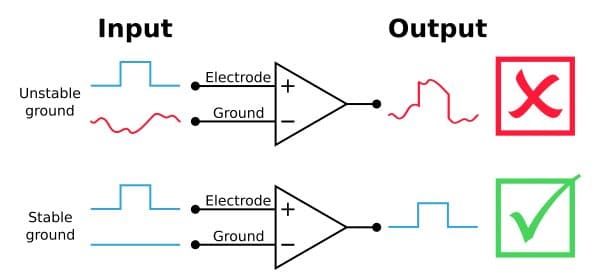
Common sources of noise and interference
Electromagnetic fields (EMFs)
Problem: EMFs come from any device using electricity, such as lights, refrigerators, or computers. These fields can interfere with sensitive electrophysiology equipment, creating noise in your recordings.
Solution: Use a Faraday cage to shield your setup. The cage blocks external electromagnetic waves by creating opposing currents in its conductive material.
Ground loops
Problem: Ground loops happen when two points that are supposed to share the same ground actually have slightly different potentials. This can cause humming or other interference.
Solution: Ground your setup in a star pattern, where all equipment connects to a single grounding point. Avoid daisy-chaining connections.
How to ground your electrophysiology setup
Key points about grounding
Most electrophysiology amplifiers offer two ground points:
- Headstage ground: For grounding the recording chamber or preparation.
- Amplifier ground: For shielding the table, Faraday cage, or other equipment.
Only ground the recording chamber through the headstage. Extra grounding can cause noise.
Star-pattern grounding to avoid ground loops:
- Connect all equipment (table, Faraday cage, manipulators) directly to one grounding box.
- Do not chain connections (e.g., from the table to the manipulator to the cage). This creates loops and introduces noise.
Choosing a grounding source:
- Do not ground your system to the building’s protective earth, as it can carry interference from nearby devices.
- Instead, use the amplifier’s analog ground or signal ground as the grounding point.
How to handle electrostatic discharge (ESD)
Electrostatic discharge can damage sensitive components like the headstage. Follow these tips:
Handling the headstage
- Always turn off the power supply before connecting or disconnecting the headstage.
- Before touching the headstage, touch a conductive surface (e.g., the table or the amplifier’s outer connectors) to equalize your potential.
- Avoid wearing gloves, as they can hold a static charge.
Transport and storage
- Store headstages in the provided pink antistatic bags or black conductive foam boxes.
Use a grounding strap
- Wear a grounding wrist strap to keep yourself at the same potential as the equipment. Connect the strap to the amplifier’s ground.
Reducing noise: trial and error
When grounding your setup, try this step-by-step approach:
- Disconnect all grounding wires.
- Reconnect one wire at a time, checking for noise after each connection.
- Keep connections that reduce noise; remove those that do not.
Quick tips for success
- Use a Faraday cage to block electromagnetic interference.
- Ground all shielding equipment in a star pattern.
- Test different configurations of amplifier ground and chassis ground to find the least noisy setup.
- Always be cautious about electrostatic discharge when handling sensitive equipment.
By following these steps, you can ensure accurate, reliable measurements in your electrophysiology experiments.
About the author:
Dr. Jens Looser
- Studied Biology at the University of Würzburg
- Did his PhD thesis in Georg Nagel’s lab, characterizing light activated proteins (Channelrhodopsin and PAC) using the two-electrode voltage clamp technique in Xenopus oocytes
- Joined npi in 2010. Working in sales & support, doing installations and trade shows.


